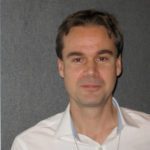Lien vers Pubmed [PMID] – 31726060
Lien DOI – S0022-2836(19)30661-810.1016/j.jmb.2019.11.005
J Mol Biol 2020 02; 432(3): 737-744
The ability of homologous chromosomes (or selected chromosomal loci) to pair specifically in the apparent absence of DNA breakage and recombination represents a prominent feature of eukaryotic biology. The mechanism of homology recognition at the basis of such recombination-independent pairing has remained elusive. A number of studies have supported the idea that sequence homology can be sensed between intact DNA double helices in vivo. In particular, recent analyses of the two silencing phenomena in fungi, known as “repeat-induced point mutation” (RIP) and “meiotic silencing by unpaired DNA” (MSUD), have provided genetic evidence for the existence of the direct homologous dsDNA-dsDNA pairing. Both RIP and MSUD likely rely on the same search strategy, by which dsDNA segments are matched as arrays of interspersed base-pair triplets. This process is general and very efficient, yet it proceeds normally without the RecA/Rad51/Dmc1 proteins. Further studies of RIP and MSUD may yield surprising insights into the function of DNA in the cell.

